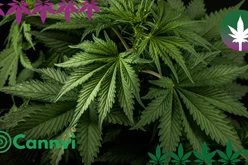Hemp, also known as Cannabis sativa , is one of the oldest plants used by humanity. Its history goes back thousands of years and spans different cultures and eras. In this blog post, we will explore the fascinating history of hemp from its origins to the present, highlighting the diverse cultural significance of this amazing plant.
The early use of hemp
The use of hemp can be traced back to ancient times, where the plant was used for different purposes in different parts of the world. In China, hemp fibers have been used to make fabrics and paper more than 10,000 years ago. In Egyptian culture, hemp played an important role in the production of ropes, sails and clothing.
Hemp in the Middle Ages and the Renaissance
During the Middle Ages and Renaissance, the use of hemp spread across Europe. The plant was used to make ropes and sails for ships, making an important contribution to seafaring and the discovery of new continents. Hemp was also used to make paper, and some of the earliest Bibles were printed on hemp paper.
Hemp in North America
The history of hemp in North America begins with the first settlers. Hemp was cultivated in the North American colonies and was an important source of raw materials for the production of paper, clothing and rope. In the 17th century, Virginia even passed laws requiring farmers to grow hemp.
Hemp as a drug
In the 20th century, hemp fell into disrepute due to its psychoactive uses. With the passage of the Marijuana Tax Act in 1937, hemp was made illegal in the United States and many other countries. This legislation stigmatized hemp and limited its uses.
The renaissance of hemp
In recent decades, however, interest in hemp has changed again. The discovery of the many possible uses of hemp ( don't miss anything and sign up for our newsletter ) other than intoxicants has led to a renaissance of this versatile plant. Hemp is now used for the production of food, textiles, building materials and even as a raw material for bio-plastics and bio-fuels.
Hemp and the environment
One of the most notable properties of hemp is its environmental friendliness. The plant grows quickly, requires little water and no pesticides. It can absorb CO2 from the atmosphere and improve the soil. Hemp fibers are also extremely durable and can be reused for many years.
Conclusion
The history of hemp is rich and varied. From its origins in ancient times to the modern Renaissance, hemp has always played an important role in various cultures and industries. Today, hemp is becoming increasingly important as a sustainable resource and as an alternative to many conventional materials. The versatility and environmental friendliness of hemp make it a valuable raw material for the future.



.png?h=64&w=200&mode=max&scale=canvas&format=webp&autorotate=true)












.png)